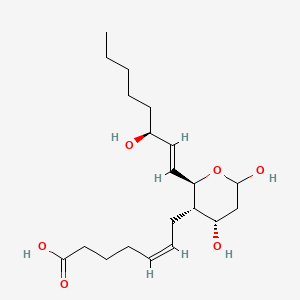| MeSH term | MeSH ID | Detail |
|---|---|---|
| Stomach Ulcer | D013276 | 75 associated lipids |
| Hyperlipidemias | D006949 | 73 associated lipids |
| Carcinoma, Non-Small-Cell Lung | D002289 | 72 associated lipids |
| Coronary Disease | D003327 | 70 associated lipids |
| Colitis | D003092 | 69 associated lipids |
| Liver Cirrhosis | D008103 | 67 associated lipids |
| Mammary Neoplasms, Experimental | D008325 | 67 associated lipids |
| Reperfusion Injury | D015427 | 65 associated lipids |
| Pain | D010146 | 64 associated lipids |
| Weight Loss | D015431 | 56 associated lipids |
| Diabetes Mellitus, Type 1 | D003922 | 56 associated lipids |
| Leukemia, Myeloid | D007951 | 52 associated lipids |
| Asthma | D001249 | 52 associated lipids |
| Kidney Failure, Chronic | D007676 | 51 associated lipids |
| Thrombosis | D013927 | 49 associated lipids |
| Fatty Liver | D005234 | 48 associated lipids |
| Coronary Artery Disease | D003324 | 47 associated lipids |
| Metabolic Syndrome | D024821 | 44 associated lipids |
| Lupus Erythematosus, Systemic | D008180 | 43 associated lipids |
| Ischemic Attack, Transient | D002546 | 42 associated lipids |
Thromboxane b2
Thromboxane b2 is a lipid of Fatty Acyls (FA) class. Thromboxane b2 is associated with abnormalities such as endothelial dysfunction, Diabetes Mellitus, Non-Insulin-Dependent, Diabetes Mellitus, Ischemia and Thrombocytosis. The involved functions are known as Platelet Activation, Excretory function, Anabolism, Inflammation and mRNA Expression. Thromboxane b2 often locates in Endothelium, Hepatic and Microsomes, Liver. The associated genes with Thromboxane b2 are PTGS2 gene, prothrombin fragment 2 and CCL14 wt Allele.
Cross Reference
Introduction
To understand associated biological information of Thromboxane b2, we collected biological information of abnormalities, associated pathways, cellular/molecular locations, biological functions, related genes/proteins, lipids and common seen animal/experimental models with organized paragraphs from literatures.
What diseases are associated with Thromboxane b2?
Thromboxane b2 is suspected in endothelial dysfunction, Diabetes Mellitus, Non-Insulin-Dependent, Diabetes Mellitus, Ischemia, Thrombocytosis, Acute Coronary Syndrome and other diseases in descending order of the highest number of associated sentences.
Related references are mostly published in these journals:
| Disease | Cross reference | Weighted score | Related literature |
|---|
Possible diseases from mapped MeSH terms on references
We collected disease MeSH terms mapped to the references associated with Thromboxane b2
PubChem Associated disorders and diseases
What pathways are associated with Thromboxane b2
There are no associated biomedical information in the current reference collection.
PubChem Biomolecular Interactions and Pathways
Link to PubChem Biomolecular Interactions and PathwaysWhat cellular locations are associated with Thromboxane b2?
Visualization in cellular structure
Associated locations are in red color. Not associated locations are in black.
Related references are published most in these journals:
| Location | Cross reference | Weighted score | Related literatures |
|---|
What functions are associated with Thromboxane b2?
Related references are published most in these journals:
| Function | Cross reference | Weighted score | Related literatures |
|---|
What lipids are associated with Thromboxane b2?
There are no associated biomedical information in the current reference collection.
What genes are associated with Thromboxane b2?
Related references are published most in these journals:
| Gene | Cross reference | Weighted score | Related literatures |
|---|
What common seen animal models are associated with Thromboxane b2?
There are no associated biomedical information in the current reference collection.
NCBI Entrez Crosslinks
All references with Thromboxane b2
Download all related citations| Authors | Title | Published | Journal | PubMed Link |
|---|---|---|---|---|
| Ricetti MM et al. | Effects of sodium selenite on in vitro interactions between platelets and endothelial cells. | 1999 | Int. J. Clin. Lab. Res. | pmid:10436266 |
| Tsugawa K et al. | A selective cyclo-oxygenase-2 inhibitor, NS-398, may improve portal hypertension without inducing gastric mucosal injury. | 1999 | J. Gastroenterol. Hepatol. | pmid:10440208 |
| Licker M et al. | Chronic angiotensin converting inhibition does not influence renal hemodynamic and function during cardiac surgery. | 1999 | Can J Anaesth | pmid:10442956 |
| Ogura S et al. | Protective effect of tyrphostin AG-556 on shock induced by endotoxin or gram positive bacteria. | 1999 | Shock | pmid:10446890 |
| Zhang S et al. | Effects of acupuncture on the levels of endothelin, TXB2, and 6-keto-PGF1 alpha in apoplexy patients. | 1999 | J Tradit Chin Med | pmid:10453582 |
| Arakida Y et al. | Effects of lipid mediator antagonists on predominant mediator-controlled asthmatic reactions in passively sensitized guinea pigs. | 1999 | J. Pharmacol. Exp. Ther. | pmid:10454505 |
| Melton SM et al. | Mediator-dependent secondary injury after unilateral blunt thoracic trauma. | 1999 | Shock | pmid:10454828 |
| Sheu JR et al. | The antiplatelet activity of PMC, a potent alpha-tocopherol analogue, is mediated through inhibition of cyclo-oxygenase. | 1999 | Br. J. Pharmacol. | pmid:10455267 |
| Jiménez R et al. | Involvement of thromboxane A2 in the endothelium-dependent contractions induced by myricetin in rat isolated aorta. | 1999 | Br. J. Pharmacol. | pmid:10455307 |
| Hino Y et al. | Changes in endothelium-derived vascular regulatory factors during dobutamine-stress-induced silent myocardial ischemia in patients with Kawasaki disease. | 1999 | Jpn. Circ. J. | pmid:10462014 |
